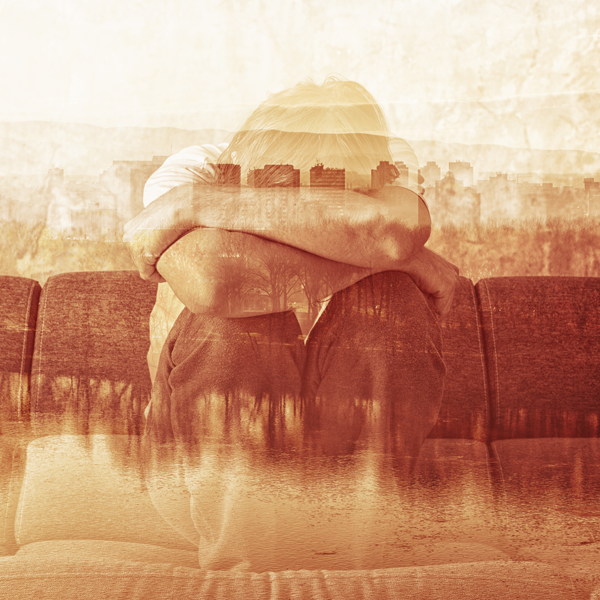
Psychedelic-assisted psychotherapy with MDMA (aka Ecstasy or Molly) is a promising form of treatment for deep-seated trauma. Trauma-focused cognitive behavioral therapy is frequently used to address the destructive effects of early trauma, proving particularly helpful to youth with PTSD and mood disorders resulting from abuse, violence, or unresolved grief. Trauma-informed care treats the whole person, recognizes past trauma and the maladaptive coping mechanisms that the individual may have adopted to survive their distressing experience. Exposure therapy and cognitive reappraisal therapy are two of the more reliable treatments for trauma and PTSD. Psychotherapy can help a person build resilience, develop coping skills, and address unresolved feelings that are keeping them stuck. Eating healthy, exercising, avoiding alcohol and drugs, getting enough sleep, seeing loved ones regularly, and emphasizing self-care can help relieve trauma symptoms. Lifestyle changes are an early treatment option to consider. There are multiple avenues of treatment available for people experiencing from short- or long-term trauma symptoms.
#Trauma psychology professional
Left unaddressed or untreated, trauma can undermine relationships and wreak havoc on personal and professional lives. It may sound contradictory, but post-traumatic growth can exist right alongside PTSD. Some people may undergo post-traumatic growth, forging stronger relationships, redefining their relationship with new meaning and/or spiritual purpose, and gaining a deeper appreciation for life. These can include building resilience, the development of effective coping skills, and development of a sense of self.-efficacy.

Positive psychological changes after trauma are also possible when people acknowledge their difficulties and see themselves as survivors rather than victims of unfortunate experience. Living in defense mode, and ever-vigilant to the possibility of threat, people may experience ongoing problems with sleep or physical pain, encounter turbulence in their personal and professional relationships, and feel a diminished sense of self-worth. The amygdala become hyperactive, its over-reaction to minor perturbations leading to an outpouring of stress hormones. Sufferers of long-term trauma may develop emotional disturbances, such as extreme anxiety, anger, sadness, survivor’s guilt, disassociation, the inability to feel pleasure ( anhedonia), or PTSD (post-traumatic stress disorder). Such negative feelings dissipate as the crisis abates and the experience fades from memory, but for some people, tthe distressing feelings can linger, interfering with day-to-day life. Short-term fear, anxiety, shock, and anger/ aggression are all normal responses to trauma. The sympathetic nervous system jumps into action, stimulating the release of adrenaline and noradrenaline and stress hormones that prepare the body for a fight-flight-or-freeze response.

It responds by sending out an alarm to multiple body systems to prepare for defense. The loss of a parent neglect emotional, physical, or sexual abuse and divorce are among the most common types of Adverse Childhood Experiences.ĭisturbing events activate the amygdala, a structure in the brain responsible for detecting threats. ACEs can disrupt the normal course of development and the emotional injury can last long into adulthood. Over time, such individuals are at risk for compassion fatigue, whereby they avoid investing emotionally in other people in an attempt to protect themselves from experiencing distress.Īdverse Childhood Experiences (ACE) cover a wide range of difficult situations that children either directly face or witness while growing up, before they have developed effective coping skills. Secondary or vicarious trauma arises from exposure to other people’s suffering and can strike those in professions that are called on to respond to injury and mayhem, notably physicians, first responders, and law enforcement. Like other types of trauma, it can undermine a sense of safety in the world and beget hypervigilance, constant (and exhausting!) monitoring of the environment for the possibility of threat.

The sense of being trapped is a feature of the experience. It can develop in response to persistent bullying, neglect, abuse (emotional, physical, or sexual), and domestic violence.Ĭomplex trauma can arise from experiencing repeated or multiple traumatic events from which there is no possibility of escape. Common examples include a car crash, physical or sexual assault, or the sudden death of a loved one.Ĭhronic trauma can arise from harmful events that are repeated or prolonged. Acute trauma reflects intense distress in the immediate aftermath of a one-time event and the reaction is of short duration.


 0 kommentar(er)
0 kommentar(er)
